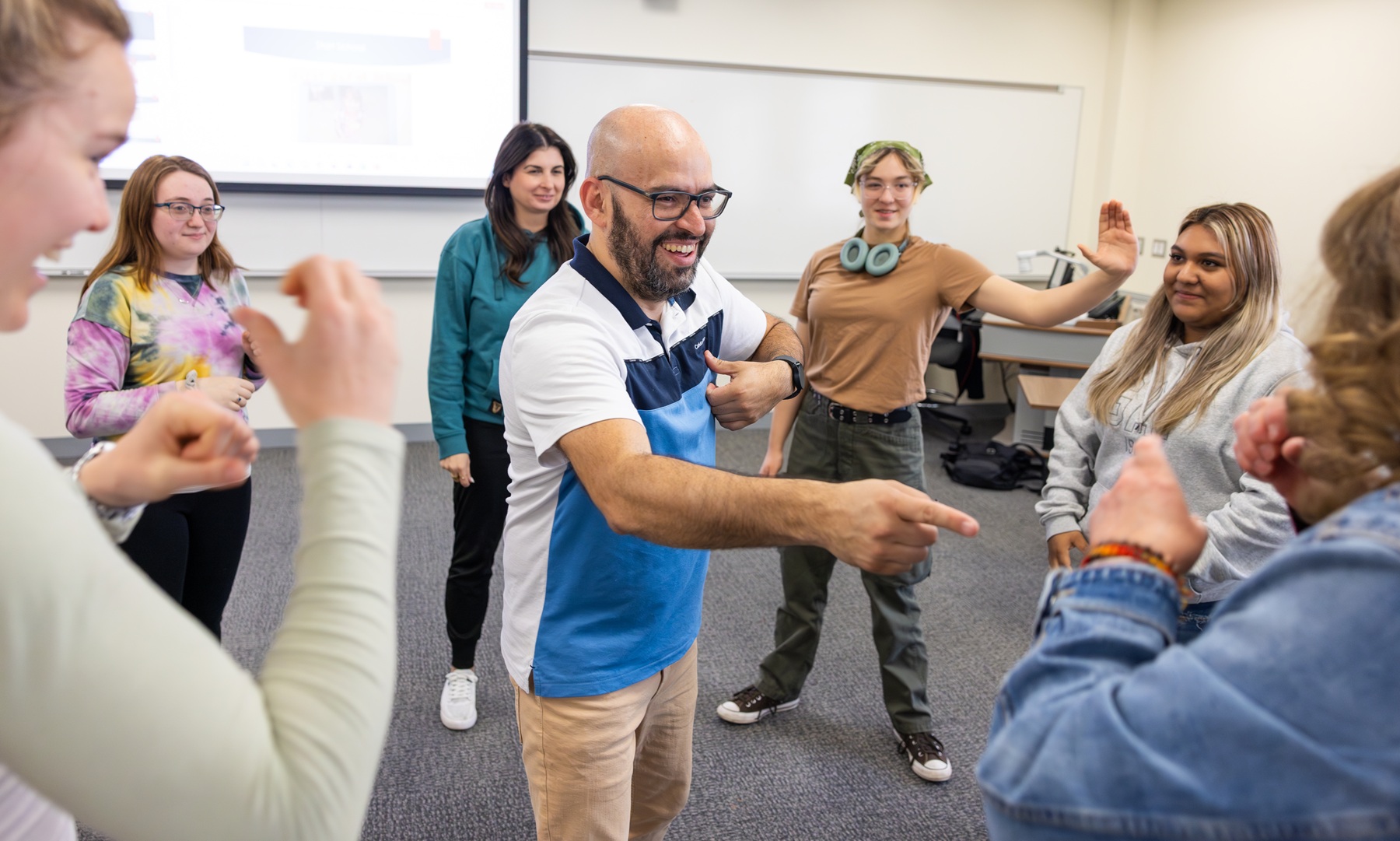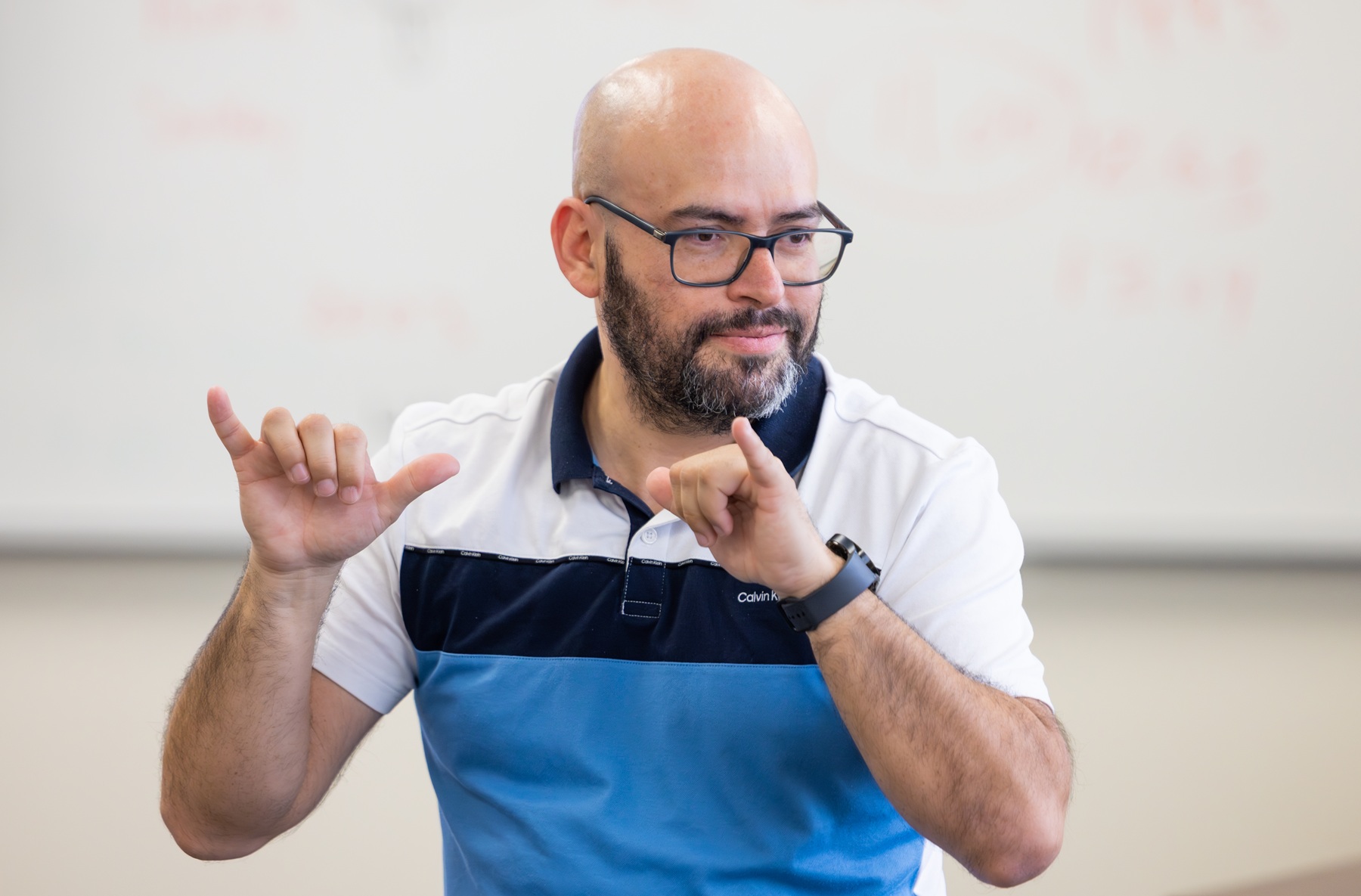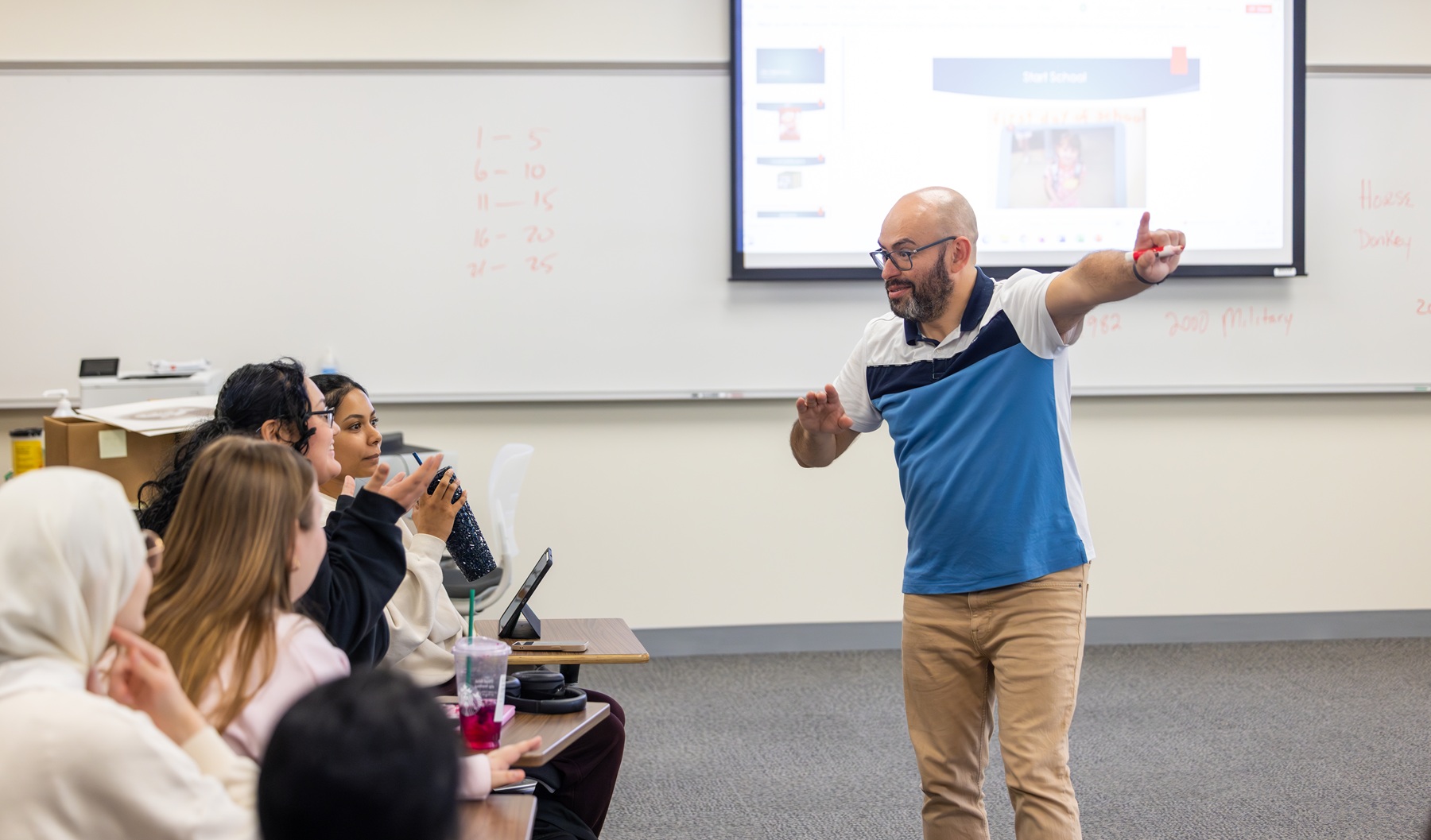Harper College is closed on Friday, April 18, for Reading Day.

 Born to deaf parents in a family where he was the fourth generation born without hearing,
Harper College Instructor Marcos Aguilar was so immersed in Deaf culture as a child
that he thought people who didn’t use sign language were strange.
Born to deaf parents in a family where he was the fourth generation born without hearing,
Harper College Instructor Marcos Aguilar was so immersed in Deaf culture as a child
that he thought people who didn’t use sign language were strange.
“I grew up being exposed to [sign language] immediately and feeling like being a deaf person was normal,” said Marcos, who teaches American Sign Language (ASL). “As soon as I started to acquire language to be able to communicate, I learned that the Deaf community is actually quite small, so that was a shift in perspective.”
Now in his first year as an instructor after completing two years as a participant in Harper’s Leveraging Equity in Academia through Diversity (LEAD) Faculty Fellowship program, which is designed to attract and train faculty from underrepresented groups, Marcos teaches and supports hearing and deaf Harper students and employees as they navigate the complexities of communication. Learning ASL helps them shift the way they express themselves and understand others – a process that started for Marcos when his family immigrated to Chicago from Ecuador when he was just 7 years old.
“There were a variety of levels of culture shock,” he said. “We were a deaf family from Ecuador. In Ecuador, the Deaf community is very oppressed. They are not able to participate in community events as people with disabilities. So, when my family moved to the United States, they were very surprised to find out how much accessibility was available, and that society bore the burden of providing accessibility which made us feel that certainly anything was possible.”
 Marcos went on to earn a bachelor's degree in religious studies from California State
University, Northridge, which had accessibility built into its system, allowing him
to enjoy the same privileges others have in a collegiate environment. He was the first
in his family to receive a college education.
Marcos went on to earn a bachelor's degree in religious studies from California State
University, Northridge, which had accessibility built into its system, allowing him
to enjoy the same privileges others have in a collegiate environment. He was the first
in his family to receive a college education.
He then returned to Ecuador, where he helped to create the nation’s first sign language dictionary, which organizes signs by hand shape and includes variations of signs to reflect the different ways sign language is used from the coast to the Andes Mountains. It was a painstaking process that included videoing sign variations, determining sign use and meaning, and documenting common signs.
“It was a significant contribution because it was able to show in black and white, in written form that Ecuadorian Deaf people have a language. They have Ecuadorian sign language. They have a right to education,” Marcos said. “They have a right to attend bilingual schools and have bilingual education and not be forced to use oral communication. Before this dictionary, they would say, ‘Well, there’s no documentation of sign language, so we’re teaching Spanish to everyone, no matter if someone can hear or not.’ Once we established this dictionary, it really opened the door for the recognition of an official sign language that’s used within the community. We really had to do this for a paradigm shift.”
Marcos later earned his Master’s in Sign Language Education from Gallaudet University, one of the only deaf and hard of hearing universities in the world, while working as a literature instructor and in an administrative role at the Idaho School for the Deaf.
Dr. Jaime Riewerts, dean of Liberal Arts and Sciences, said Marcos brings a global perspective to sign language that wasn’t present at Harper.
“We might not think about it, but other languages have their own sign languages. He knows that as well,” she said. “There are almost like dialects and regional differences, and he’s done a really good job of teaching that to people. I’ve watched him in the classroom. He’s incredibly dynamic. His classes are so fun and interactive, and [students] are being asked to speak, read, write and listen – you know, all of the skills are really integrated. It’s impossible for a student to go into his class and be passive. It is absolutely an engaging environment.”
In his role at Harper, Marcos works closely with Access and Disability Services (ADS), which provides accessible programs, services and support to the Harper community, including deaf students. He says he doesn’t have to explain what he needs because the department is experienced, efficient and proficient in providing services for students and faculty.
“Access and Disability Services goes above and beyond because we know deaf individuals are navigating an English-speaking world where English is their second language,” said Becky Ramirez-Malagon, interim director of ADS. “We have students who use captioning or students who need an FM system for their hearing aid because they might have some residual hearing. A lot of times, we work with students to provide all of that. If necessary, we will buy equipment that students need to ensure that they’re receiving appropriate services. ADS provides a robust amount of services.”
Sara Lucas, an ADS scheduling coordinator and ASL interpreter, works with Marcos to schedule interpreters and was part of the search committee that appointed him to his current position. She said Marcos is a dynamic and creative educator and was the obvious choice.
“Marcos was very engaging with his students. He was creative in the ways that he encouraged them to learn, and he was also very mindful of things that are very important to us as a society,” she said. “He was very inclusive in his teaching practices and mindful of students that are on a broad spectrum of ability and learning styles and comfort levels. His awareness and genuine curiosity about teaching and engaging with students was just really, really apparent.”
When Marcos isn’t teaching college-level ASL courses he’s facilitating Harper’s ASL club, supporting adjunct instructors, teaching high school dual-credit classes, sitting in on Harper Curriculum Committee meetings or working with the Diverse Relationships Engaged in Affirming Multiculturalism (DREAM) employee resource group, which promotes participation and inclusion of employees of color at Harper. Marcos led efforts to redesign Harper’s ASL Lab to make the space more usable for how sign language is taught and plays a major role in building the ASL program. He’s currently developing a new placement test that will assess students and determine which ASL class is right for them. Marcos sees his future at Harper.
“I really love Harper College. I’m learning something new every single day,” he said. “One thing that I’m really working towards is developing a stronger, more robust ASL program, which means hiring more faculty who are proficient at teaching at this level so students can see variation, and I’m hoping that we can partner with more colleges and universities to develop consistent curriculum and programming for students to easily transfer in and out of Harper College.”
